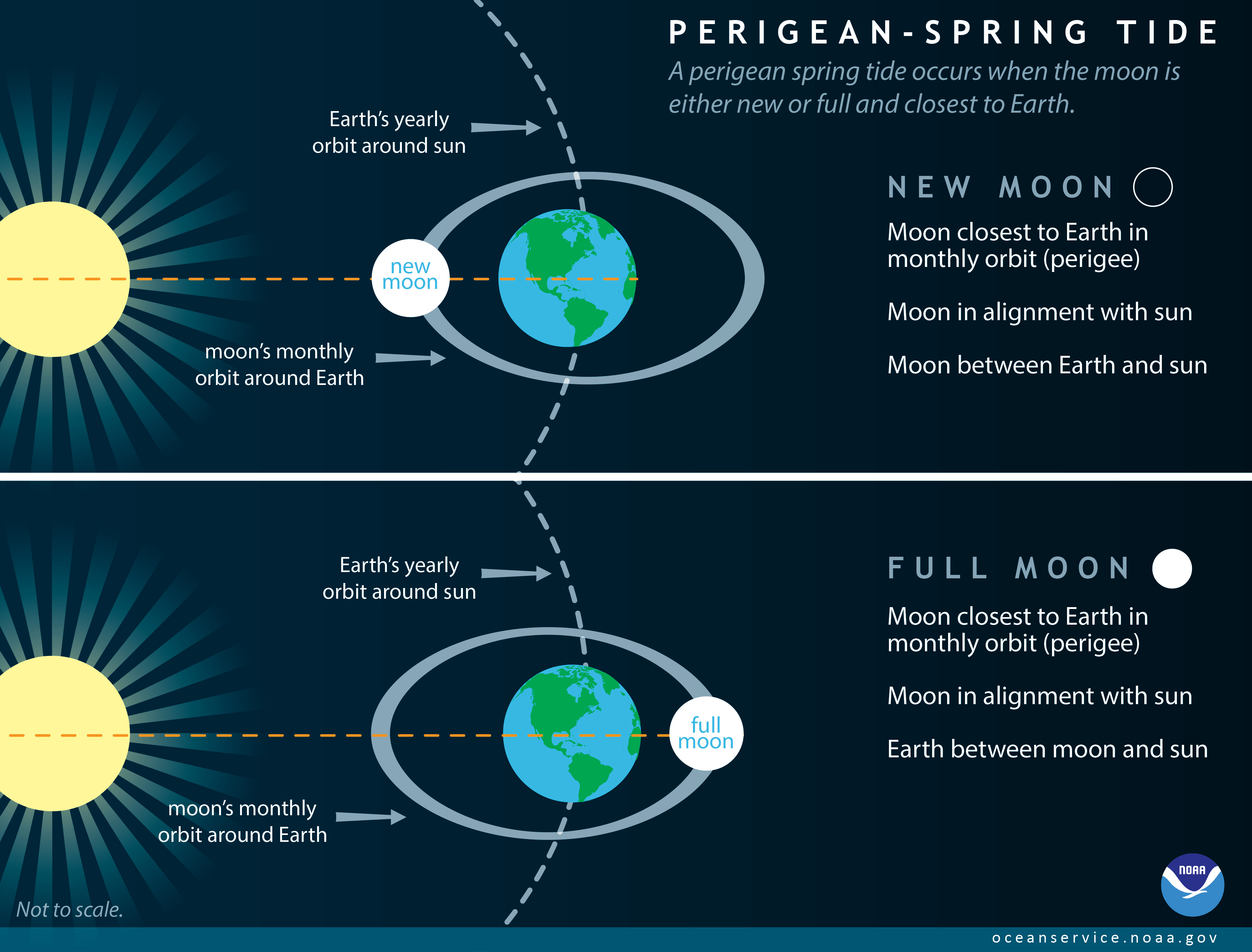Archive: September 28 Reddit "Ask Me Anything"
Exploring the Science Behind King Tides: chat with a NOAA oceanographer about the September 2015 perigean spring tide event.

About three or four times a year (in the spring and the fall), the new or full moon coincides closely in time with the perigee of the moon—the point when the moon is closest to the Earth. These occurrences are often called 'perigean spring tides.' The difference between 'perigean spring tide' and normal tidal ranges for all areas of the coast is small. In most cases, the difference is only a couple of inches above normal spring tides.
Ask Me Anything!
 Meet oceanographer Stephen Gill, NOAA's chief scientist for tides and currents. On September 28, 2015, a perigee and the full Moon occur on the same day. When this happens, stronger than normal tides will occur both a few days before and after. Perigean spring tides are often referred to as King Tides because the high waters along with seasonal weather effects have the potential to cause major flooding especially in low-lying areas.
Meet oceanographer Stephen Gill, NOAA's chief scientist for tides and currents. On September 28, 2015, a perigee and the full Moon occur on the same day. When this happens, stronger than normal tides will occur both a few days before and after. Perigean spring tides are often referred to as King Tides because the high waters along with seasonal weather effects have the potential to cause major flooding especially in low-lying areas.
Reddit "Ask Me Anything" Details (Archive)
- Who: NOAA oceanographer Stephen Gill
- What: Reddit Science "Ask Me Anything." Steve is ready to answer your questions about the science behind perigean spring tides and in particular what to expect with the September 28 event. Get your questions ready about king tides, predicting an event, measuring tides, and even what it's like to be a NOAA oceanographer. Ask him anything!
- When: 28 September, 2015, at 1:00 p.m. EDT
- Where: Reddit.com/r/Science/